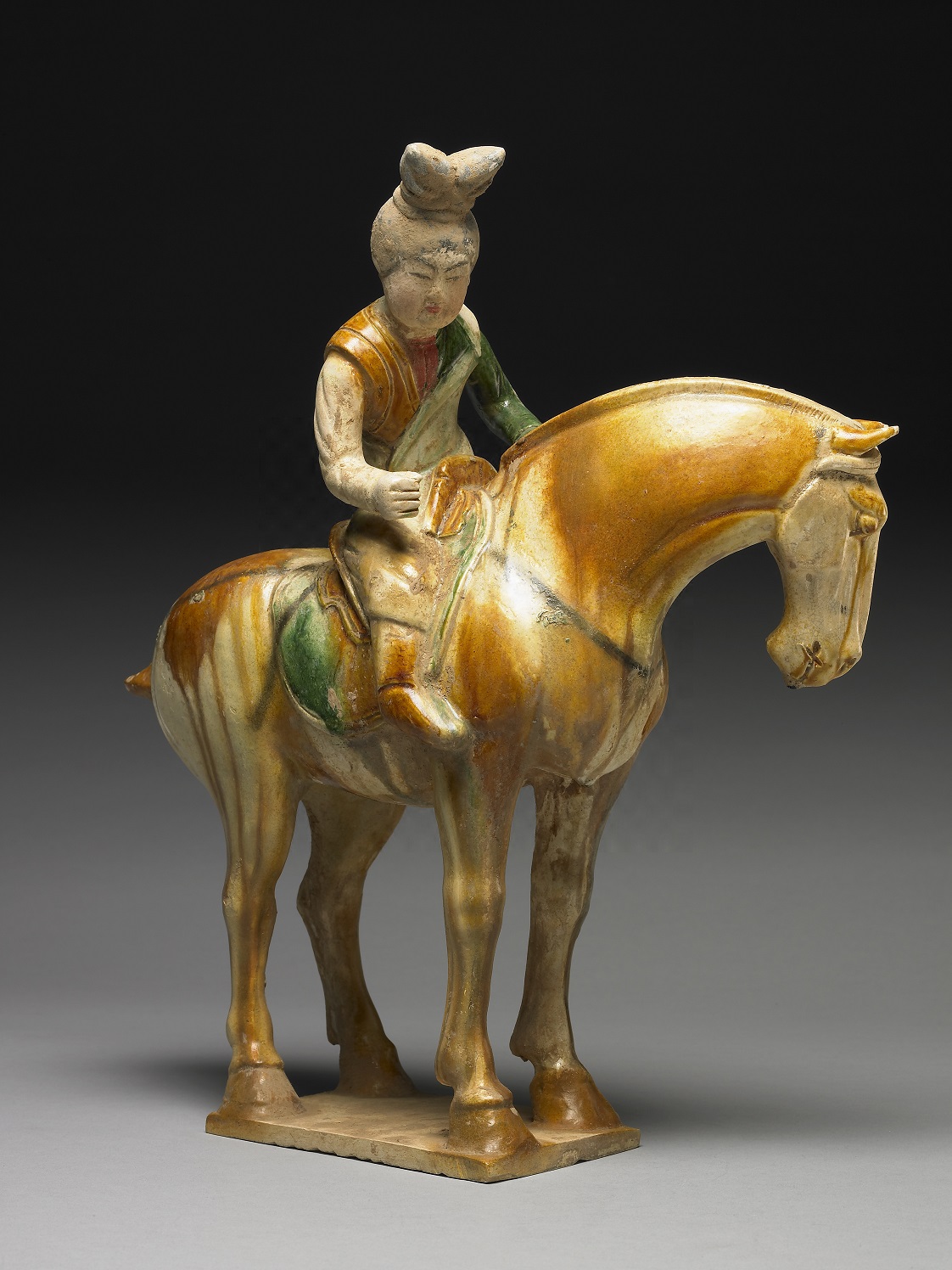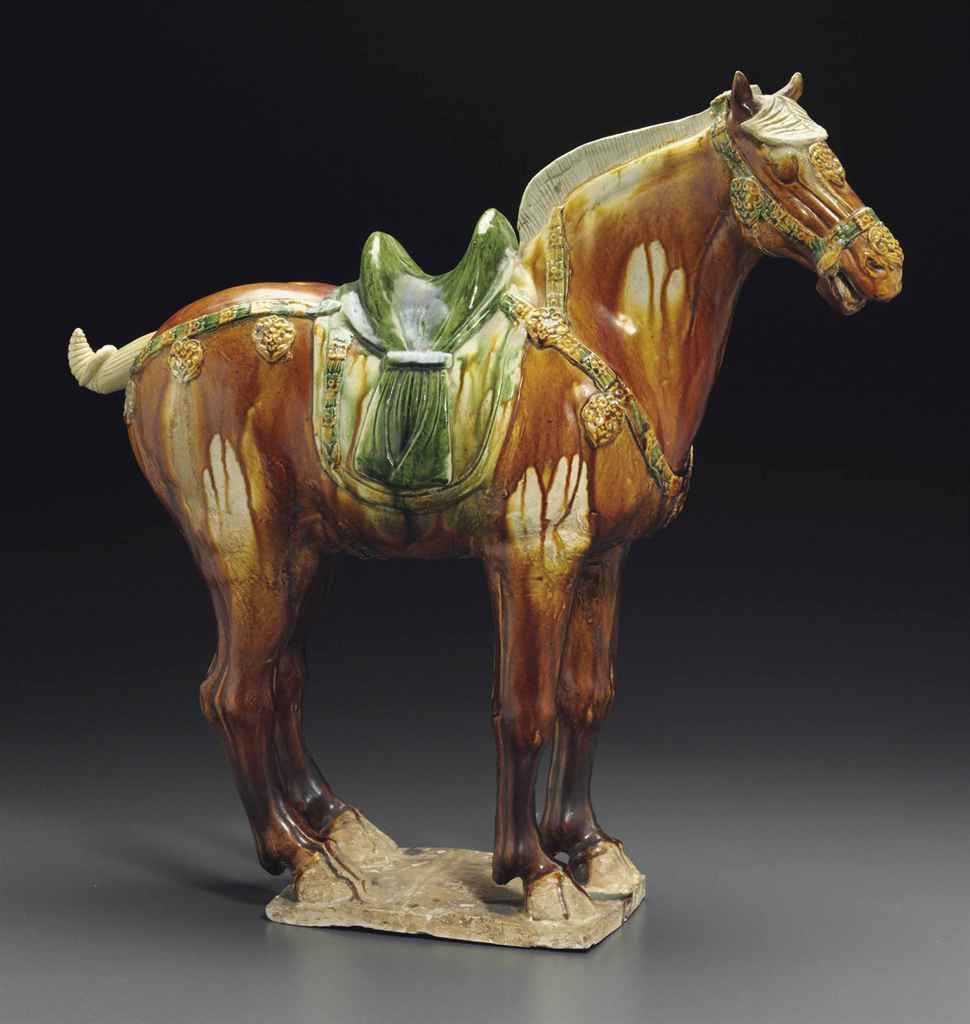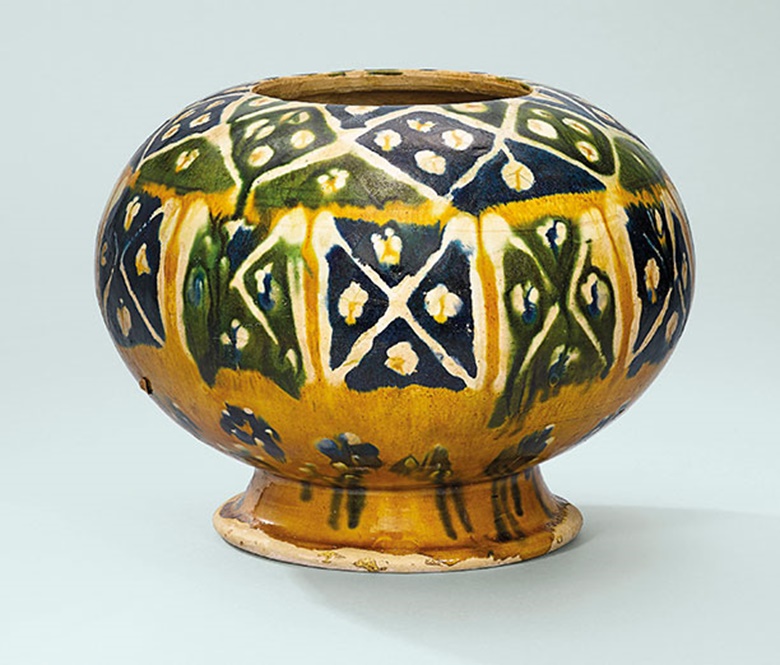Sancai
penternakan ikan keli di kelantan are all kush strains indicaSancai - Wikipedia. Sancai (Chinese: 三彩; pinyin: sāncǎi; lit sancai. three colours) is a versatile type of decoration on Chinese pottery using glazes or slip, predominantly in the three colours of brown (or amber), green, and a creamy off-white. It is particularly associated with the Tang dynasty (618–907) and its tomb figures, … See more
cum se sterge o pagina in word حرير
. Are Tang Sancai potteries or porcelains? In fact, so-called ceramic is a general term for …. Sancai: Three-colored glazed figures used in funerary … sancai. Sancai pottery is a type of lead-glazed earthenware figures and vessels used for burial in the Tang Dynasty, during the late 7th and …. Tang Sancai – China Cultural Center Sydney. Tang Sancai, a versatile type of ceramic decoration in Chinese pottery, known for its iconic brown, green and creamy off-white slip and glazes. The fall of the Sui Dynasty saw the … sancai.jpg)
de ce fierbe copilul in mamaliga pdf candy kush autoflower
. Tang dynasty (618–907) - The Metropolitan Museum of Art sancaiangsana home qazaxıstan hansı yarımkürədə yerləşir
. Combinations of white, amber, and green glazes, typically known as sancai or “three-colored” wares, were first developed in China in the late seventh century, and were used primarily for funerary goods sancai. The bright colors, …sugar free syrup ce inseamna cand te inteapa in cap
. The characteristics of the world-famous Tang Sancai. “Tang Sancai” covers all aspects of social life. It shows an infinite variety of postures and faces: gentle and dignified women, scary-looking warriors, serious and crafty officials, ….jpg)
dorog hírek coloured paper
. (sahn-ts-eye) literally, “three colors”; a dripping effect of three colors of glazes favored in the Tang dynasty sancai. Typically, it refers to yellow, green, and creamy white glaze. …. Collecting Guide: Tang-dynasty sancai | Christiesfoto janda gersang comment rédiger une annonce
. The pinnacle of Tang-dynasty art. Beyond the yellow, white and green hues associated with the ceramics produced in this period, sancai-glazed pieces come in …. Tang Dynasty Pottery and Antique Tang Sancai - Marchant Asian …. Learn about the history, process and value of Tang dynasty pottery, also known as sancai, a form of polychrome lead-glazed ceramics with naturalistic colours. Browse a selection …. GLOSSARY: Sancai - Gotheborg.com sancai. The sancai decoration seems instead to have been re-invented around year 675 during the Tang Dynasty. Sancai glazed Tang pottery wares were produced at a limited number of …. Tang dynasty (618–907) - The Metropolitan Museum of Art. Brilliantly colored lead glazes in shades of green, amber, and white, which are known as three-color, or sancai, glazes, were widely used in funerary goods in the late seventh …. Tang dynasty (618–907) - The Metropolitan Museum of Art. In style and subject matter, this horse and rider with sancai or "three-color" glaze is emblematic of funerary sculpture from the early eighth century, the apex of the Tang …. Sancai Tuhui - Wikipedia. Sancai Tuhui (Chinese: 三才圖會, san-TSEYE TOO-khwey), compiled by Wang Qi (Chinese: 王圻) and his son Wang Siyi (王思義), is a Chinese leishu encyclopedia, completed in 1607 and published in 1609 during the late Ming dynasty, featuring illustrations of subjects in the three worlds of heaven, earth, and humanity.The work contains a large …. What Is Sancai? | Appraisals & Valuations sancai. Sancai pieces were also made for export along the Silk Road and influenced ceramics later made in a variety of places including Syria, Italy and Cyprus. Japanese and other East Asian potters were also influenced by the Sancai style. Later, in the mid-period of the Tang era, Sancai was mass-produced18 szülinapi köszöntő oioi store
. There is an unresolved controversy as to .. Sancai | Cerámica Wiki | Fandom. La cerámica Sancai o tricolor (三彩, en chino ) usa tres colores principales para su elaboración, y son barnices verdes, azul y marron. La técnica se remonta a la Dinastía Tang. Sin embargo los esmaltes que se usaban …. Tang Tricolor Pottery & Ceramics (Tang Sancai): An In-Depth Guide. Tang Tricolor pottery, also called Tang Sancai, is a type of pottery that flourished in China during the Tang Dynasty (618-907 AD). It is made of white clay and coloured using a glaze containing lead. The glaze uses metals such as iron, copper, manganese and cobalt as colouring agents and is fired at a low temperature of 750-850°C.. Sancai Pottery - 38 For Sale on 1stDibsтаблетки от зубной боли balla moussa daffé
. An object in our assortment of sancai pottery is a generally popular piece of furniture, but those created in Art Nouveau styles are sought with frequency. Many designers have produced at least one well-made option in this array of sancai pottery over the years, but those crafted by Awaji Pottery and Tang Dynasty are often thought to be among .. Tang dynasty (618–907) - The Metropolitan Museum of Art. Combinations of white, amber, and green glazes, typically known as sancai or “three-colored” wares, were first developed in China in the late seventh century, and were used primarily for funerary goods. The bright colors, clear tones, and superior bonding power of this technique were achieved by firing twice, first at high temperature to . sancai. Chinese | Phoenix-head ewer, Tang sancai ware | Chinese | The .. The vessel is covered in the standard Tang sancai (three-color) glaze that includes shades of amber, yellow, and white. A considerable amount of blue and green has been effectively employed, most notably as background coloring in the relief panels. The glaze extends over the entire object, ending at the top of the high foot to reveal an .. GLOSSARY: Sancai - Gotheborg.com sancai. The sancai decoration seems instead to have been re-invented around year 675 during the Tang Dynasty. Sancai glazed Tang pottery wares were produced at a limited number of kilns sancai. It is today foremost famous as the beautiful multicolored glazes of the Tang dynasty pottery figures. The glaze occurs on both mortuary pieces for funerary use as well .. Tang Standing Horse figure, Canberra - Wikipediamodel soie thiane diagne ratu glow
. Standing Horse is a tomb figure created during the Tang dynasty in China. In ancient China, numerous tomb figurines and other artefacts were designed specifically to be buried with the deceased in large burial mounds. [1] [2] This large figurine features the use of Sancai, a glazing technique popular during the Tang dynasty.. Li Sancai - Wikipedia sancai. Li Sancai (Chinese: 李三才; Wade–Giles: Li San-tsai; courtesy name Daofu 道甫; art name Xiuwu 修吾; d. 1623) was an official during the late Ming dynasty in China. Li Sancai is best remembered for his outspoken opinions against the Wanli Emperor (r.1572-1620) regarding his eunuch-led mining policy in 1596; because of this, Li was a . sancai. Li Sancai – The Ming History English Translation Project - KNIT sancai. Li Sancai. “Li Sancai,” translated by Harry Miller, is licensed under a Creative Commons Attribution-Noncommercial-Share Alike 3.0 United States License. Li Sancai, whose style name was Daofu, was a native of Tongzhou, in Shuntian prefecture. He earned his jinshi degree in Wanli 2 [1574] and was assigned to the Board of Revenue as a .. Changsha Ware - Timothy S sancai. Y. Lam Museum of Anthropology sancai. Sancai glazed pottery used three colors derived from minerals: yellow-brown from iron oxide, green from copper oxide, and white from lead. Rarely, ceramicists included cobalt to create a blue glaze, but it was far too expensive for regular use. Changsha Ware is a classic example of a three-color sancai ware. Yet, it is also a style that .. Sancai ware | pottery | Britannica sancai. Other articles where sancai ware is discussed: pottery: Provincial and export wares: …tile kilns also manufactured “three-coloured” (sancai) wares, perhaps originally a product of the Cizhou kilns sancai. These were decorated with coloured glazes that were often kept from intermingling by threads of clay (cloisonné technique) or were used in conjunction with …. sancai - Smithsonians National Museum of Asian Art sancai. sancai
. Typically, it refers to yellow, green, and creamy white glaze. Posted In: sancai
